 | –≠–ª–µ–∫—Ç—Ä–æ–Ω–Ω—ã–π –∫–æ–º–ø–æ–Ω–µ–Ω—Ç: STV9390 | –°–∫–∞—á–∞—Ç—å:  PDF PDF  ZIP ZIP |
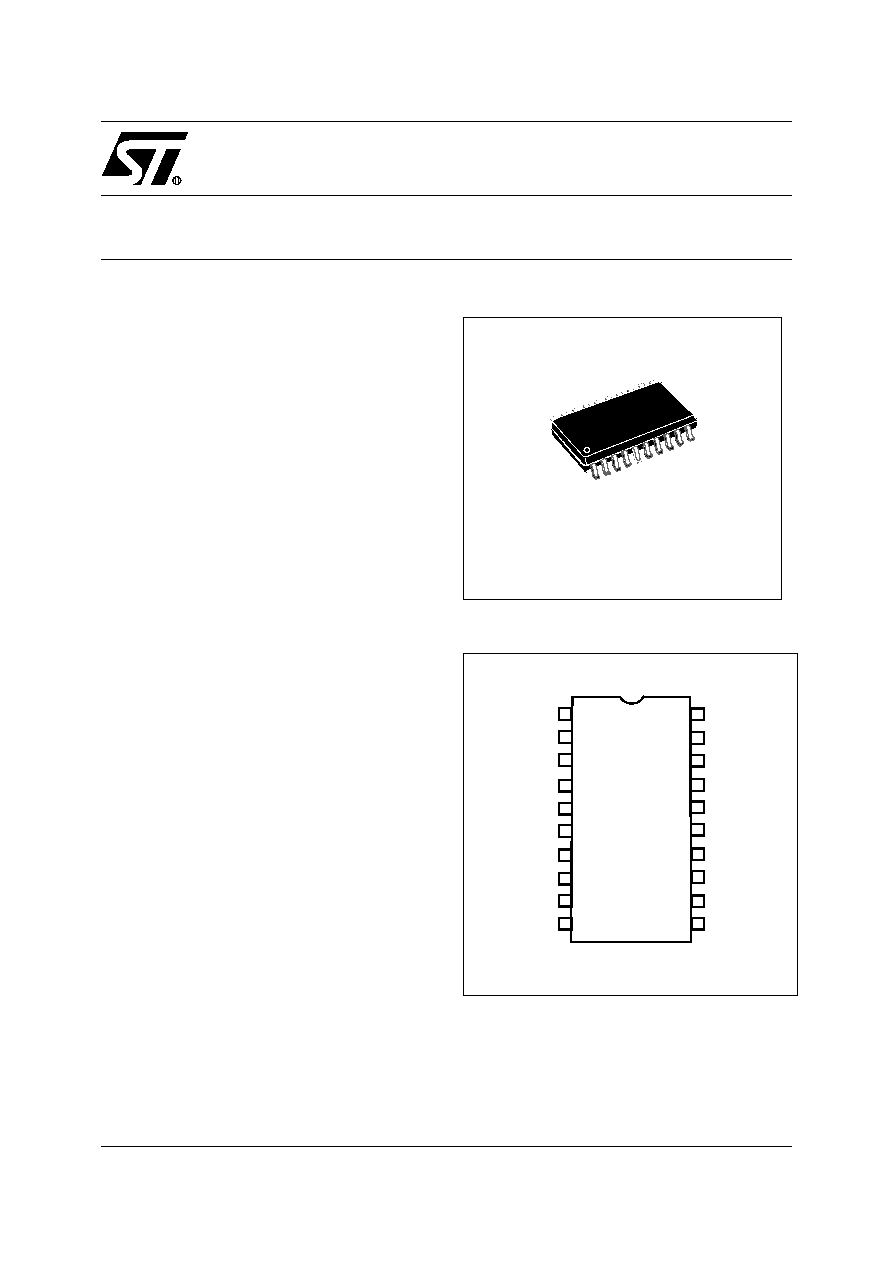
September 2003
1/7
Version 2.0
STV9390
CLASS-D VERTICAL DEFLECTION AMPLIFIER FOR TV AND
MONITOR APPLICATION
FEATURES
s
HIGH EFFICIENCY POWER AMPLIFIER
s
NO HEATSINK
s
SPLIT SUPPLY
s
INTERNAL FLYBACK GENERATOR
s
OUTPUT CURRENT UP TO 2.2 APP
s
SUITABLE FOR DC COUPLING
APPLICATION
s
FEW EXTERNAL COMPONENTS
s
PROTECTION AGAINST LOW Vcc
DESCRIPTION
Designed for monitors and TVs, the STV9390 is a
class-D vertical deflection booster assembled in
SO20 Package.
It operates with supplies up to +/- 18V, provides
up to 2.2 App output current to drive the yoke. The
internal flyback generator avoids the need for an
extra power supply.
PIN CONNECTION
SO20
ORDER CODE: STV9390
20
19
18
17
16
15
14
13
12
11
1
2
3
4
5
6
7
8
9
10
EAOUT
IN+
IN-
+VCC
+VCC
POW
-VCC
POW
SGND
-VCC
-VCC
FREQ
FEEDCAP
VREG
BOOT
NC
-VCC
-VCC
NC
OUT
CFLY+
CFLY-
1
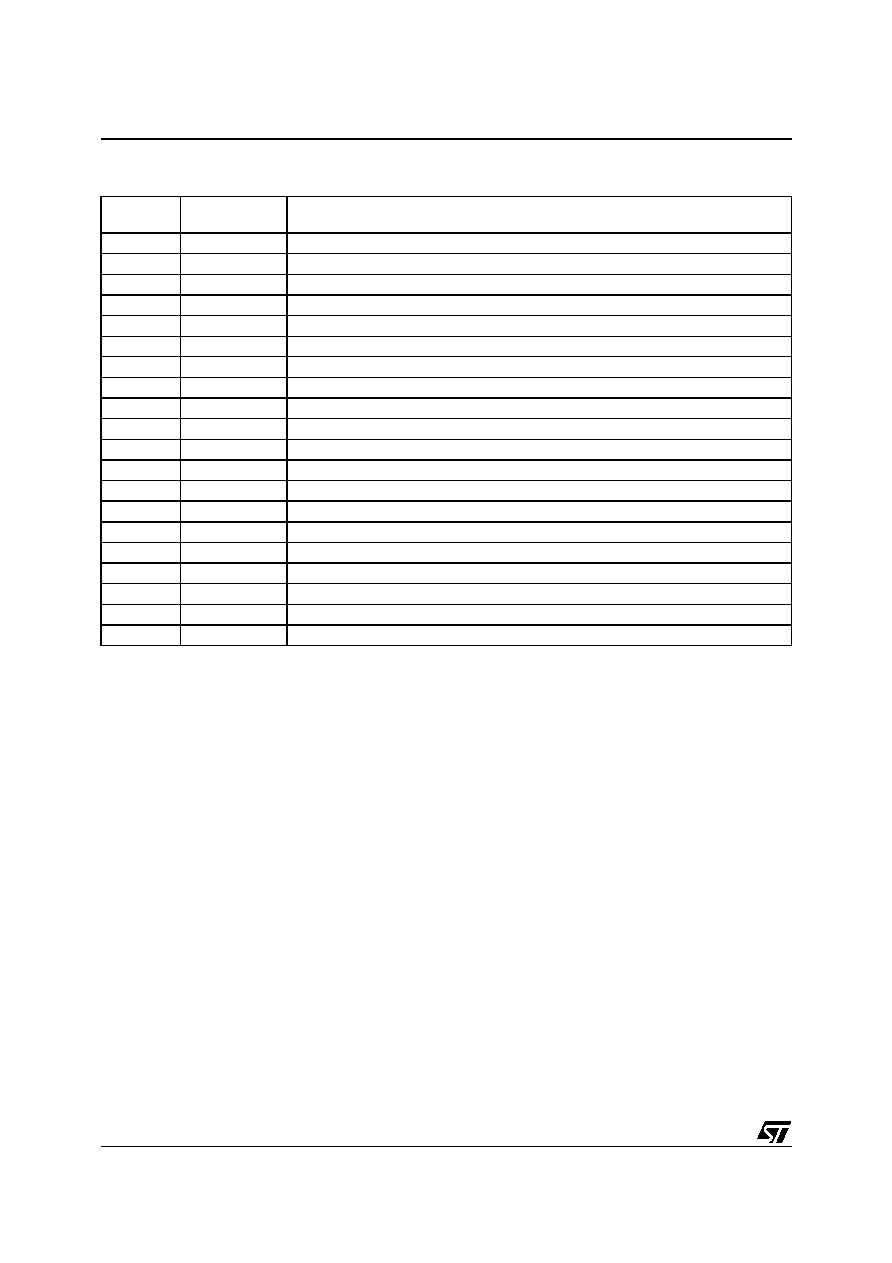
STV9390
2/7
1
PIN FUNCTIONS
2
FUNCTIONAL DESCRIPTION
The STV9390 is a vertical deflection circuit operating in class D. The class D is a modulation method
where the output transistors work in switching mode at high frequency. The output signal is restored by fil-
tering the output square wave with an external LC filter. The major interest of this IC is the low power dis-
sipation comparatively to traditional amplifiers operating in class AB, eliminating the need of an heatsink.
Except for the output stage which uses the class D modulation, the circuit operation is similar to
the one
of a traditional linear vertical amplifier.
A reference signal (sawtooth) has to be applied to the circuit which can accept a differential or single end-
ed signal. This sawtooth is amplified and applied as a current to the deflection yoke. This current is meas-
ured by means of a low value resistor. The resulting voltage is used as a feed-back signal to guarantee the
conformity of the yoke current with the reference input signal.
The overvoltage necessary for a fast retrace is obtained with a chemical capacitor charged
at the power
supply voltage of the circuit. At the flyback moment this capacitor is connected in series with the output
stage power supply. This method, used for several years with the linear vertical boosters and called "in-
ternal flyback" or "flyback generator", avoids the need of an additional power supply, while reducing the
flyback duration.
The circuit uses a BCD process that combines Bipolar, CMOS and DMOS devices. DMOS transistors are
used in the output stage due to the absence of second breakdown.
Pin
Number
Name
Function
1
+VCC
Positive supply
2
+VCCPOW
Positive power supply
3
-VCCPOW
Negative power supply
4
NC
Not connected
5
-VCC
Negative supply
6
-VCC
Negative supply
7
NC
Not connected
8
OUT
PWM output
9
CFLY+
Flyback capacitor
10
CFLY-
Flyback capacitor
11
BOOT
Bootstrap capacitor
12
VREG
Internal voltage regulator
13
FEEDCAP
Feed-back integrating capacitor
14
FREQ
Frequency setting resistor
15
-VCC
Negative supply
16
-VCC
Negative supply
17
SGND
Signal ground
18
IN-
Error amplifier inverting input
19
IN+
Error amplifier non-inverting input
20
EAOUT
Error amplifier output
2
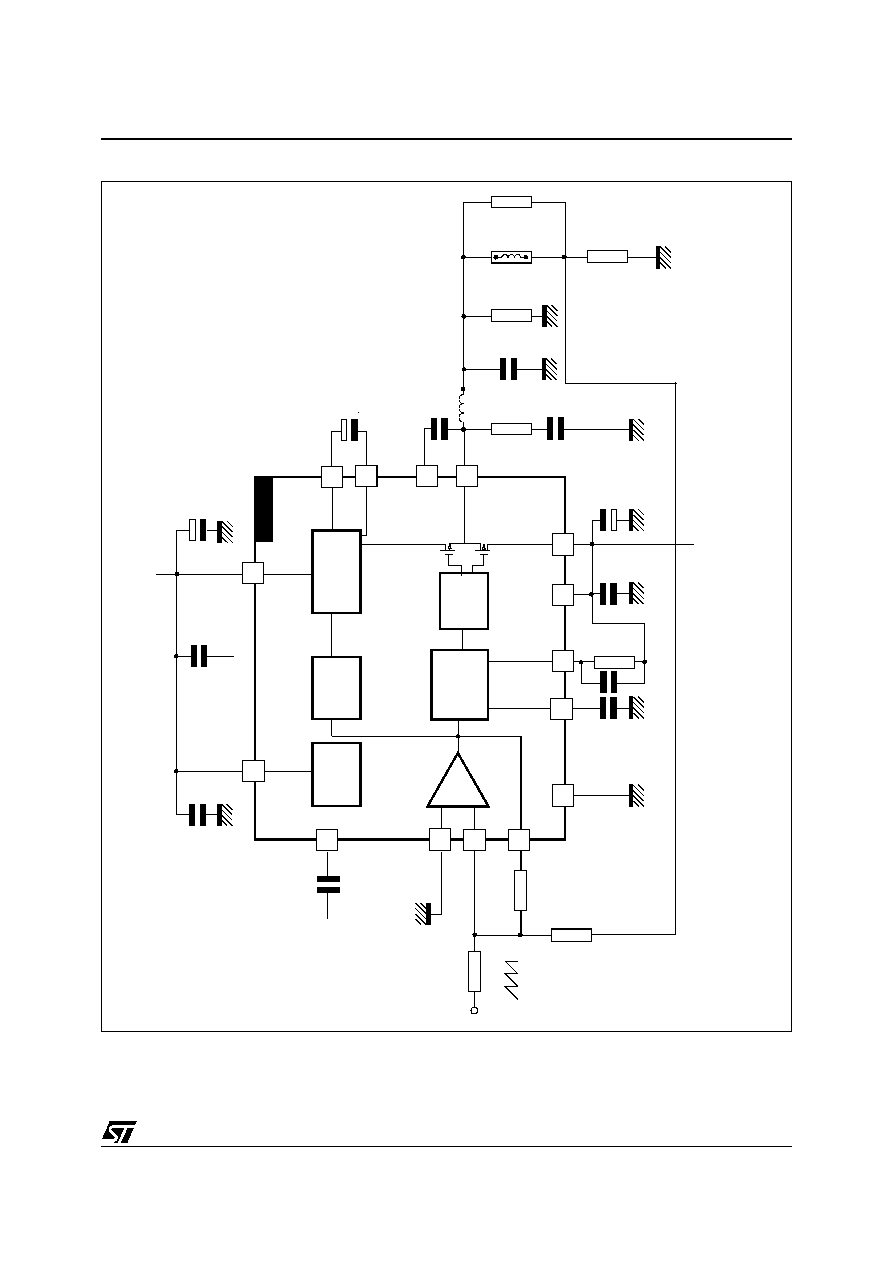
ST
V9390
3/
7
F
i
g
u
r
e
1
.
Test a
n
d A
p
p
l
ication Cir
c
uit
Flyback
Flyback
Output
Modulator
+
_
drive
generator
detection
+VCC
+VCCPOW
CFLYBACK
CFLY+
100nF
VREG
IN+
IN -
1k
10k
EAOUT
-VCCPOW
-VCC
-VCC
BOOT
Cboot
470nF
10k
4.7nF
FREQ
FEEDCAP
SGND
Pins 5,6,15,16
OUT
0.5
Deflect.
Yoke*
CFLY-
+VCC
1mH
Input signal
1k
220nF
-VCC
100nF
100nF
1000
µ
F
1000
µ
F
STV9390
100
µ
F
20
17
13
3
560pF
150
200
1
2
12
STV9390
9
10
11
8
19
18
150
14
Vref
-VCC
470pF
* Deflection yoke characteristics: R = 5.5
, L = 7mH
100nF
Sense
resistor
f
vert
= 50Hz
2
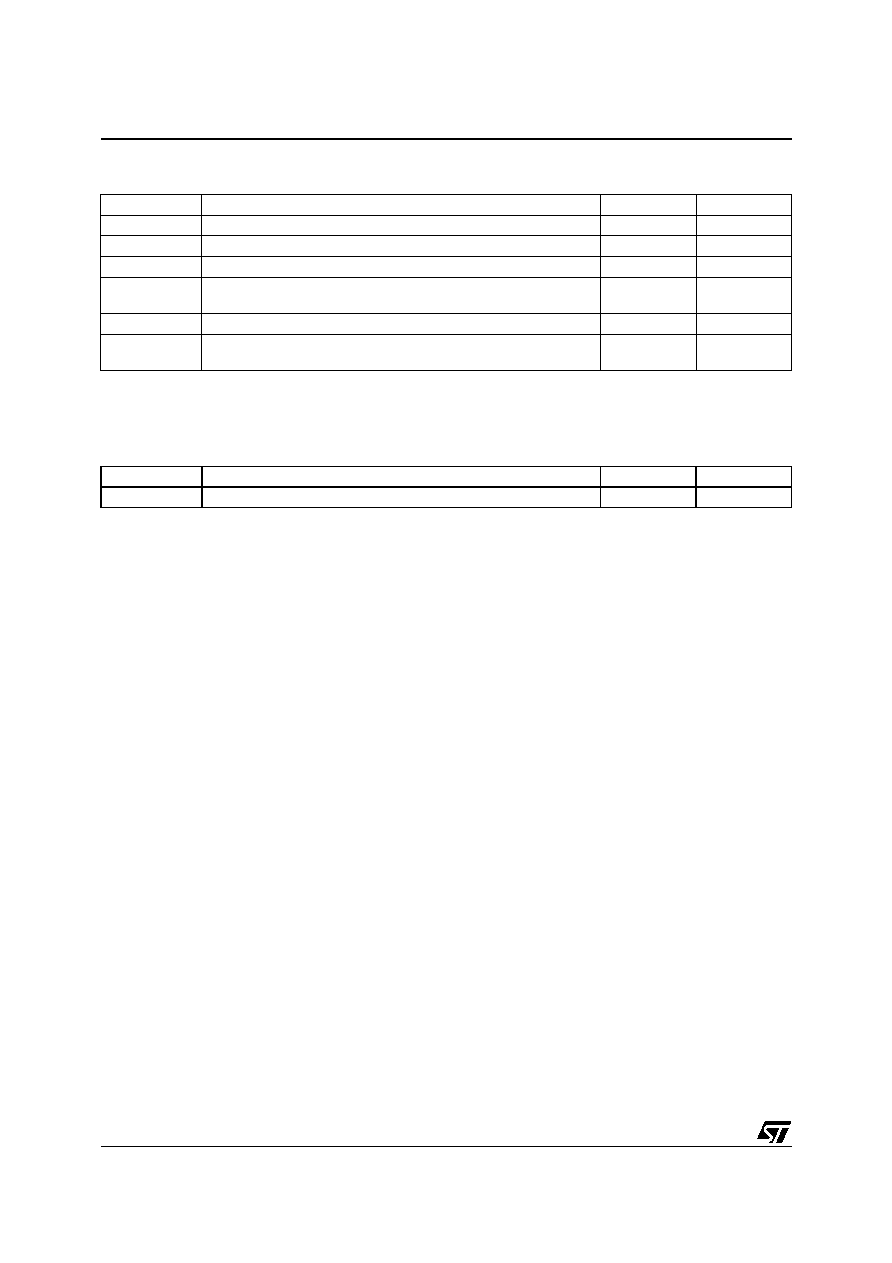
STV9390
4/7
3
ABSOLUTE MAXIMUM RATINGS
Note: 1
During the flyback with Vcc=±18V, the maximum output voltage (pin 8) is close to 72V, with respect to -Vcc
(pins 5, 6, 15, 16).
4
THERMAL DATA
Pins 5, 6, 15, 16 are internally connected together and participate to heat evacuation.
Symbol
Parameter
Value
Unit
VCC
DC Supply Voltage
±20
V
T
stg
, T
j
Storage and Junction Temperature
-40 to +150
∞C
T
op
Operating Temperature Range
0 to +70
∞C
VESD
ESD Susceptibility - Human Body Model (100 pF discharge through
1.5 k
)
±2
kV
Iout
Output current
±1.6
A
Vout
Maximum output voltage (pin 8) with respect to -Vcc
(pins 5, 6, 15, 16) and during flyback (see
Note 1
)
80
V
Symbol
Parameter
Value
Unit
R
th j-amb
Thermal resistance Junction to ambient
78
∞C/W
2
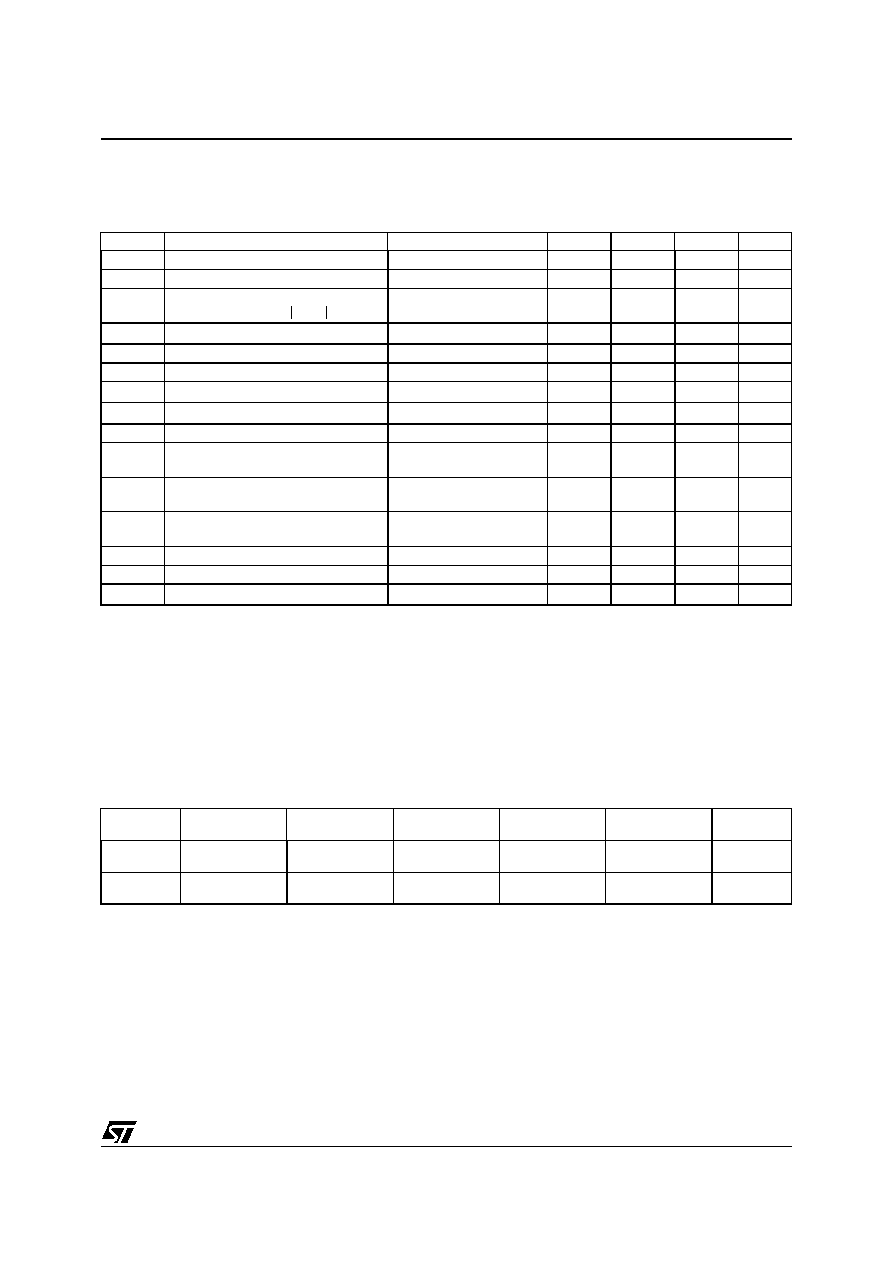
STV9390
5/7
5
ELECTRICAL CHARACTERISTICS
(refer to
Figure 1 on page 3
)
Tamb = 25∞C unless otherwise specified, Vcc = ±12V, f
vert
=50Hz
Note: 2
The maximum vertical yoke current is dependent on ±VCC. The maximum current as function of ±VCC is
given in
Table 1
Note: 3
Input voltage = 0, measured after the filter (e.g. accross the 470 nF filter capacitor)
Note: 4
Supply rejection of the positive or negative power supply. Vcc ripple
=1Vpp, f=100Hz, measured on the sense
resistor.
Note: 5
Power dissipated in the circuit in the case of the application from
Figure 1
and the current in the deflection
yoke adjusted to 2.2App. The corresponding power dissipated in the vertical deflection yoke is 2.25W.
Symbol
Parameter
Test Conditions
Min.
Typ.
Max.
Units
+Vcc
Positive supply range
+10
+18
V
-Vcc
Negative supply range
-18
-10
V
Vcc
Maximum recommended difference
between +Vcc and
±4
V
Vcc
start
Low Vcc detection
±6.5
V
Iq
Quiescent supply current
Input voltage = 0
14
mA
Iy
Maximum vertical yoke current
Note 2
±1.1
A
I
13
, I
12
Amplifier Input bias current
-0.1
µ
A
V
OS
Output Offset voltage
Note 3
-50
+50
mV
SVR
Supply voltage rejection
Note 4
82
dB
Fly
thr
Flyback detection threshold
(positive slope)
V(20)
1.5
V
Fly
thf
Flyback detection threshold
(negative slope)
V(20)
0.5
V
Pd
Integrated circuit
Dissipated power
Note 5
0.9
W
Fsw
Switching frequency
R
freq
= 10k
120
140
160
kHz
Fsw - op
Switching frequency operative range
100
200
kHz
R
freq
Frequency controller resistor range
Pin 14
7
10
14
k
Table 1. Maximum yoke current as function of ±VCC
Symbol
Unit
±VCC
±10 to 14
±15
±16
±17
±18
V
Iy
±1.1
±1.05
±1.0
±0.95
±0.85
A
Vcc
≠
2




